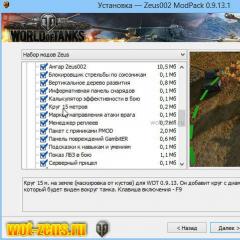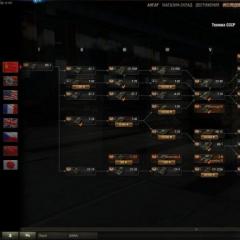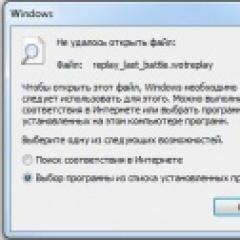Scanning photos (continued). How to convert real photos into digital form? How to digitize old photos at home
Google has released another app! It is unlikely that this will surprise anyone, since the company’s “park” of applications is already quite impressive. Nevertheless, we have prepared a short story about a new product that will help digitize old photos from the home archive, and perhaps improve them a little.
Gone are the days when, in order to obtain a digital image from a regular photograph printed on paper, you had to connect a scanner to your computer and use special software to scan the photos almost one at a time. Now they have been replaced by special ones for smartphones. And then Google also presented its vision of solving this problem.
The new product is called PhotoScan and is available on both Android and iOS. The principle of its operation is based on obtaining five images, which are subsequently combined into one to obtain the best result.
When you first launch the program, it helpfully demonstrates exactly what needs to be done to get the finished image. Namely, it shows how to first focus the frame on the entire photograph, and then sequentially aim the “sight” at the circles in the corners of the image.

Actually, as it is said, this is how it should be done. First, we point the camera so that the entire image fits, and take the first photo.

Well, after that we start catching points in the corners. It is worth noting that in most photographs this process is quite simple, but sometimes you cannot catch the point the first time and you have to wait a little until the image is recognized.

Once the scans are ready, you can do whatever you want with them. For example, save to gallery, send by mail, upload to Google Drive and much more. The main thing is that now what was on paper and lay in the dustiest corner is not only better preserved from the ravages of time, but is also always with you if needed.
Overall, Google has created a good application that is worthy of taking a place in the phone’s memory along with other applications from a well-known developer. Of course, there are many other scanner options, but Google has a lot of experience in working with images, which will undoubtedly help them win their share of the scanning audience.
Application: PhotoScan Developer: Google Category: Applications Version: 1.0 Price: For free Download: Google Play Already interested in the application: 1281 HumanScanning photos (continued).
I already wrote about. Now I will show how it happens using a simple scanner.
If you have a home scanner, then digitizing a photo will not be difficult for you.
In I talked, in general, about the problem of preserving our home archives.
Now I'll show you how I did it digitization their childhood photographs. These are not in color, but black and white. They were made a long time ago in a photo studio. That is, their quality was initially good.
Let's get started photo scanning.
At home I have an old cheap BENQ scanner. But it suits me just fine. Moreover, what can I do with it film digitization, since it is equipped with an adapter for this purpose.
So let's start.
- First, we do a general setup of the scanner. Set the scan resolution. I usually choose 600 dpi, but 300 dpi is fine. Different manufacturers may offer a scale of values, but the general area of \u200b\u200bthese values is approximately the same.
- The higher the resolution value, the better the quality of the scanned image. But a very large value does not need to be selected, as the image will be very large.
- Do not forget about the place where the scanned images will be stored. To do this, you choose the path where the scanner should send them.
- After all the steps, we do a preliminary scan.

- after reading the image. We can preview it and make further adjustments to brightness, contrast, and so on.

- And, most importantly, choose the scan area.

Otherwise, the scanner will not understand and will process the extra area around your photo.
- Once we've got everything set up. Making the final scanning. And we admire the results.

They may or may not be good. It all depends not only on the quality of the scanner itself, but also on your scanner settings.

After digitization, it would be nice to further edit the photo in graphic editors. We would get even better results. And in some cases (when the photo is of very poor quality), it will be necessary not only to scan, but also to restore the digitized photo.
But we will talk about this next time.
Have you wanted to digitize that dusty shoebox with old photographs for a long time? At the same time, you were already interested in how much it costs in a darkroom. The prices for digitizing photos are incredibly high.
In this article, we will tell you how to digitize a photo yourself using a mobile phone. Naturally, the better the camera of a smartphone or tablet, the higher the quality of digitizing old photos. Due to the high quality of modern cameras of mobile devices, you can count on fairly good digitization results.
The first thing to do is open Google Play or the Apple App Store and install the PhotoScan app.
Launch PhotoScan. You will see a short animated tutorial on how to use PhotoScan. Basically, you take four photos of each photo, moving towards the corners in turn, guided by the app's prompts. PhotoScan then creates one image of the old photo.
Click the "Start Scan" button at the bottom of the screen to get started. PhotoScan will ask for permission to access the camera, we allow it. To scan a photo, make sure the entire image is in the camera area, and then press the shutter button.

You will see four large dots and a large empty circle that moves as you tilt the camera. Place a circle over each dot until it disappears and then move to the next one. When all dots disappear, the photo will be digitized.

Next to the shutter button, you'll see a thumbnail of your photo. Click on it to open the edit screen. Here you can crop, expand and save the photo.


When you're happy with the results, click the back arrow in the top left corner to open a screen showing the images you've viewed. If everything is in order, click "Save All" at the top of the screen. To selectively save, click on the three dots in the upper right corner and go to the "Select" item. Tap the images you want, then tap Save.
You can save black-and-white photos of a family archive, military chronicles or frames of the country's history for an unlimited time by converting them to digital format. Priceless documents, faces in faded photographs are stored in family albums, . They crumble from moisture, break from dryness, fade. These photos and documents cannot be repeated, just as it is impossible to return the past time. They need to be preserved so that descendants remember their roots, their history and appreciate it. It's one thing just to hear about the war, and quite another to see the face of a great-grandfather in military uniform before leaving for the front, to catch a common family resemblance, to feel the commonality of the past and the present.
Digitization with digital cameras
One way to digitize old photographs is to take a photograph. Transfer and save the resulting files to a separate folder on your computer without additional image processing or after retouching and enhancement in photo editors. By sorting all the images, you can create large archives.
The disadvantages of this method include glare, distortion when photographing, if an amateur. It is better if this is done by a professional photographer with special equipment. This is not cheap and if there are a lot of old photos, then this method becomes very expensive.
Digitization with a scanner
The alternative way to digitize photos is much easier. It is available to a computer user who has the status of an advanced user.
It is better to use flatbed scanners with a resolution of approximately 2400 DPI and higher for this purpose. The scanners included in the MFP kit (printer + scanner + copier) are mainly designed for photocopying documents and do not provide a high-quality image when scanning.
Find the scanner in your computer devices, right-click "scan" and, after the scan is completed, save the file by choosing the appropriate format.
If you only intend to print it, then save it in Photo format.
If you want to save the resulting image in the best possible quality, then choose the BMP format. This format takes up to several hundred megabytes, so please note that there may not be enough space on your computer for all the photos digitized in this way.
The most common JPEG format compresses any image, so loss of quality will be inevitable, but not critical. But it will allow you to save a lot of files on your computer and create a large archive.
After saving the scanned images, they can be processed in any graphics editor. Better, of course, is Adobe Photoshop, but Paint Net is also fine.
It is necessary to digitize old photos urgently, without delaying time. It is not uncommon for heirs to take out piles of old albums with photographs to the trash, not having the desire or ability to keep the history of the departed people.
Who knows in what old album, in what house, unknown photos of famous writers or departed politicians can be stored. Maybe your ancestors were once photographed with the Chelyuskinites or Lyubov Orlova? Digitize the history frozen in old photographs for posterity, do not spare the time for this.
Surely everyone has real (not digital) albums with old photographs. For example, I have a whole bunch of these albums, including my parents and grandparents, my grandfathers and I from birth and, in general, all my relatives, many of whom are no longer alive. Having such photographs is a pleasant memory for life, you must agree. But printed photographs deteriorate over time, just like, in principle, everything that we have that is not in digital form on a computer. They lose color and various defects appear. And it’s a shame when such valuable material from a personal archive disappears.
Therefore, if photographs are valuable to you, I recommend converting them into digital form. Now let’s talk about the main ways this can be done, and consider their advantages and disadvantages. And I will separately analyze the most effective options in subsequent articles.
There are several ways to convert real photos into digital form at home. I’ll touch on the main three:
The resulting digitized photographs contain glare due to the shine of the photograph, lighting and other factors. At the same time, glare and various other effects occur when shooting even matte photographs.
When shooting this way, in addition to the photo itself, there will also be extra objects on the edges of the picture, for example, a table, carpet or something else, which then, to get a really good photo, will have to be cropped separately using some kind of graphic editor.
When taking regular pictures with a camera or smartphone, you will in any case end up with a picture at least a little, but with a distorted perspective, i.e. the photograph will be slightly distorted. Again, this can be corrected later, in the graphic editor.
Digitization via a regular computer scanner.
This option is great for those who have a computer scanner. I would say that this is the best option, because you can scan every photo (usually, the scanner can even fit 2-3 photos of a standard size of 10x15 at once) and this will give the best quality. You can then correct something (for example, cut off something extra around the edges) through some graphic editor, for example, Photoshop. But maybe you won’t have to do that either.
To digitize photos in this way, you need to connect the scanner to your computer (or multifunction device) via USB, then place a photo or several on the scanner glass and start the scanning process on your computer through a special program specifically for your printer model, or through the built-in Windows tools ( section “Devices and Printers”, right-click on the connected scanner and select “Start Scan”).
I plan to write a separate article about how to scan documents and photos.
Digitization by taking photos using a camera or smartphone camera (with a standard application).
If you don’t have a scanner, but you have a good external camera, i.e. a DSLR, a “point-and-shoot” (that’s what a regular digital camera is called), or your smartphone has a good camera, then you can take a photo of the desired photos in the usual way.
This option of digitization does exist and many people use it, but more often the pictures still don’t come out the way we would like, insofar as:
Of course, all the above-described shortcomings can then be removed through graphic editors or special applications and services for photo processing (including on mobile devices). But why, if you can immediately take a very good quality picture, without glare, with correctly cropped edges and with the correct perspective? Let's look at option No. 3
Digitization via smartphone using a special mobile application.
This method follows from the previous one, only the shooting will be done through a smartphone (we discard digital cameras, DSLRs, they will not work), on which a special application is installed.
For myself, I use “Photo Scanner from Google Photos” as a mobile application for digitizing photos. There are others, but I didn’t consider them, because one day I came across a Google photo scanner, which suited everything for me and I didn’t have to look for a replacement.
This method is suitable for those who do not have a scanner for their computer, but have a smartphone with a good camera, based on Android or iOS (I have not checked the availability of applications for other operating systems).
So, to digitize a photo in this way, first install the “Google Photos” application on your smartphone (it must have a good camera!), and then install the additional “Photo Scanner” application in it. Using the photo scanner, all you have to do is place a photo lying on a flat, plain surface in a frame and, having taken a photo, then point the camera at 4 points one by one (the application will tell you). This method will remove various glares from the digital photo.
Conclusion
In general, making a digital copy of the real photographs you need is not difficult at all. For example, it is much more difficult to digitize old cassette video recordings, so sometimes you have to work hard!
And for photos, the easiest option, in my opinion, is still a scanner, since many people have them and will provide the best quality. Well, if you don’t have a scanner, then you probably have a digital camera or a DSLR, then just take the necessary photos and, if necessary, edit them in Photoshop. If you have a good, top-end smartphone, then through the “Scanner from Google Photos” application you can convert photos into digital even better than with regular shooting with a regular digital camera or SLR.



